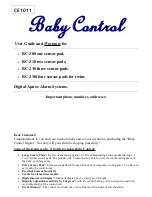
How to....
31
How to....
Note:
This chapter explains briefly how to perform a number of
important or complex tasks.
For more information about how to use the OSD menus and a
more detailed description of all the functions in the OSD, please
refer to the corresponding chapters about the OSD menus.
How to adjust the display to a new video signal
About video timings in the display memory
The display contains a list of video timings according to VESA and
other video standards. If you connect a video signal that matches a
timing from the list, it is adjusted automatically according to a
number of parameters that are defined in the list. If the connected
video signal has a timing that is not in the list, the display selects
the timing from the list with the closest match and also adjusts the
signal according to the corresponding parameters.
If the user makes any additional adjustment, the video signal
(with its adjustments) is stored as user preset. The next time this
video signal is connected and selected, the display recognizes it as
one of the user presets and reproduces it with the corresponding
adjustments. The signal is recognized by its timing and the type of
video input it is connected to. This means a certain video signal
connected to the VGA input or to the BNC inputs can be stored as
two different user presets.
Additionally you can store a user preset as User Profile and give it
a name. For more information, please refer to
“User profile
menu”
on page 17.
Note that camera selection may change some of the settings for
certain input timings, depending on the requirements for the
selected camera. The camera selection will affect the user preset,
but will never affect a user profile.








































